What does the USSR emblem mean?
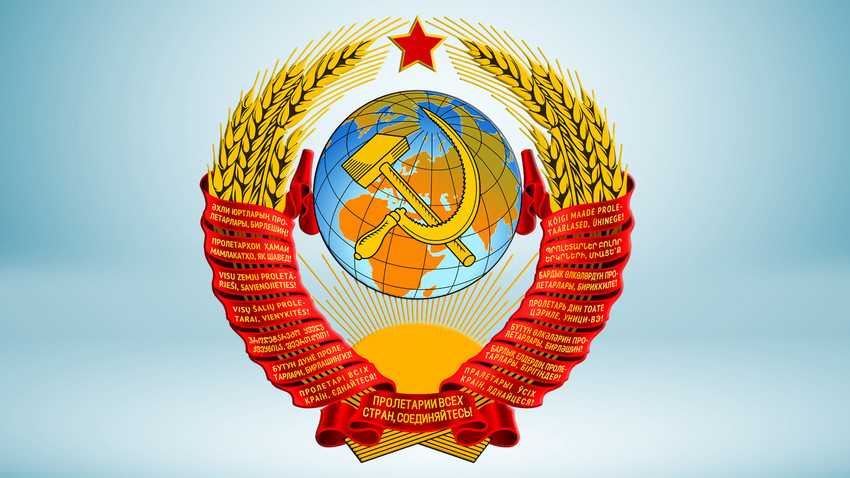
In the late 1990s in Russia, passports with USSR’s symbols were still issued – for example, the first foreign passport I received in 1998, when I was 13, bore the Soviet coat of arms on the cover and each page of it. The emblem outlived the USSR. How could this happen?
The RSFSR’s emblem: a sword removed
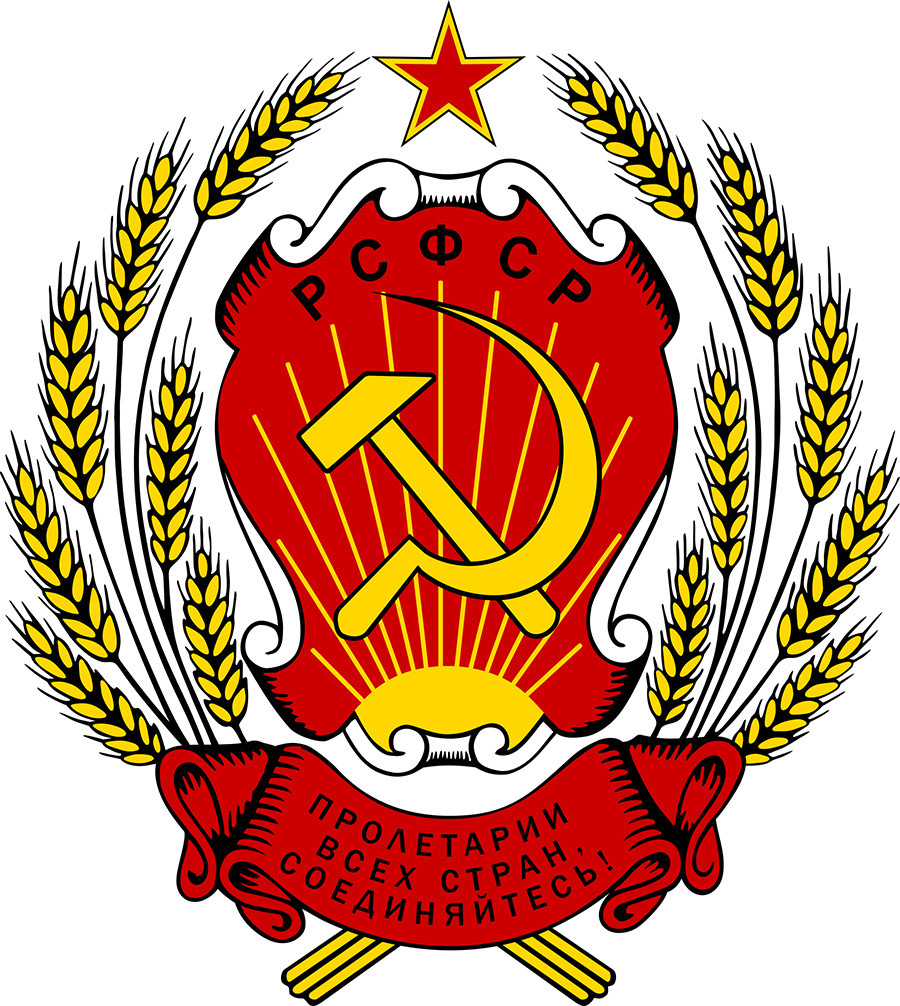
The emblem of the RSFSR (early version)
Pianist (CC BY-SA 3.0)Immediately after the 1917 Bolshevik revolution, state documents of the newly founded Russian Soviet Federative Socialist Republic (RSFSR) were signed on Tsarist-era blanks, with a double-headed eagle on them, and sealed with obsolete state seals that also used the Empire’s symbols. The creation of what eventually became the USSR’s state emblem started from the creation of a state seal.
The request to create a new state seal was filed in January 1918 by the Council of People’s Commissars (the Soviet government). By March 1918, a sketch was ready. The center of the emblem was occupied by a hammer and sickle as the main symbols of the new state – it symbolized the union of the working people (hammer) and the peasantry (sickle).
In the first sketch, the hammer and sickle were placed against the shield and pierced by a sword, and ears of wheat were placed to the left and right of the center, symbolizing the agricultural might of the country. Everybody approved of the design but Lenin, who insisted that the sword must be removed from the new state seal. Lenin also added the name of the state and the words "Workers of all lands, unite!" – the famous motto of the Communist Party first used by Karl Marx and Friedrich Engels in their 1848 Manifesto of the Communist Party. Also, these words are inscribed on Marx’s tombstone.
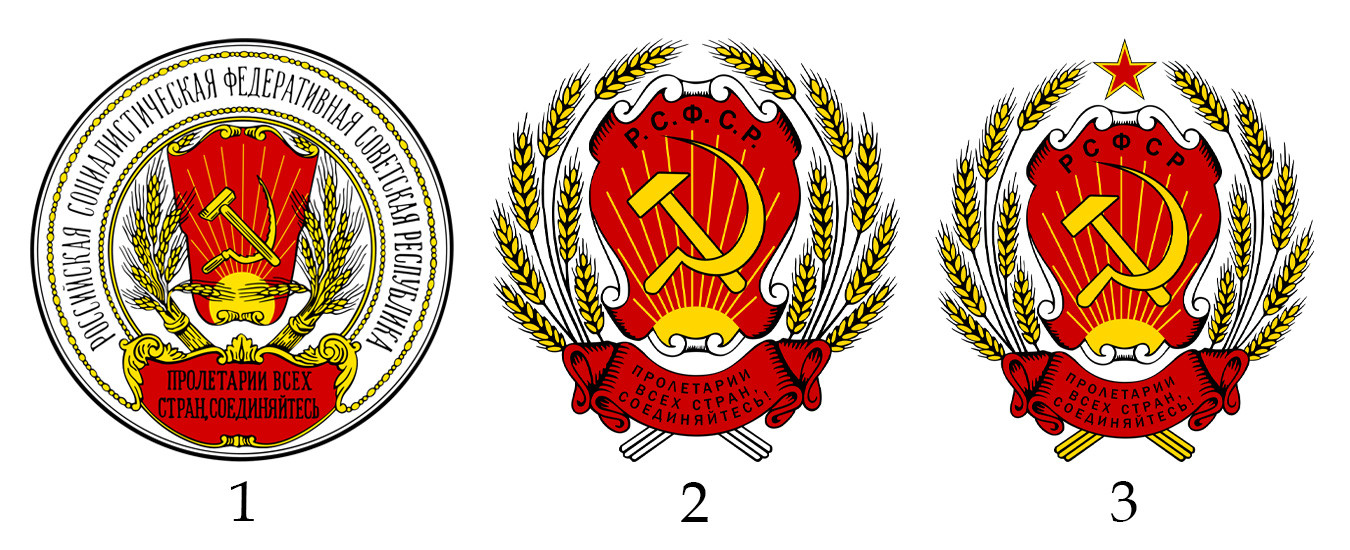
(1) The RSFSR emblem (July 19, 1918 – July 20, 1920). (2) and (3) The RSFSR emblem – as a part of the USSR (1920 – 1992).
Lobachev Vladimir; Jeromi Mikhael (CC BY-SA 3.0); Pianist (CC BY-SA 3.0)On July 10, 1918, the first Constitution of Soviet Russia was introduced, and it contained the description of the new state emblem of the RSFSR: “The coat of arms of the Russian Socialist Federative Soviet Republic consists of images of a golden hammer and sickle placed crosswise with the handles down, against a red background in the rays of the sun, surrounded by a crown of ears of wheat, and with inscriptions: ‘Russian Soviet Federative Socialist Republic’ and ‘Workers of all lands, unite!’”
The USSR’s emblem: Revolution worldwide
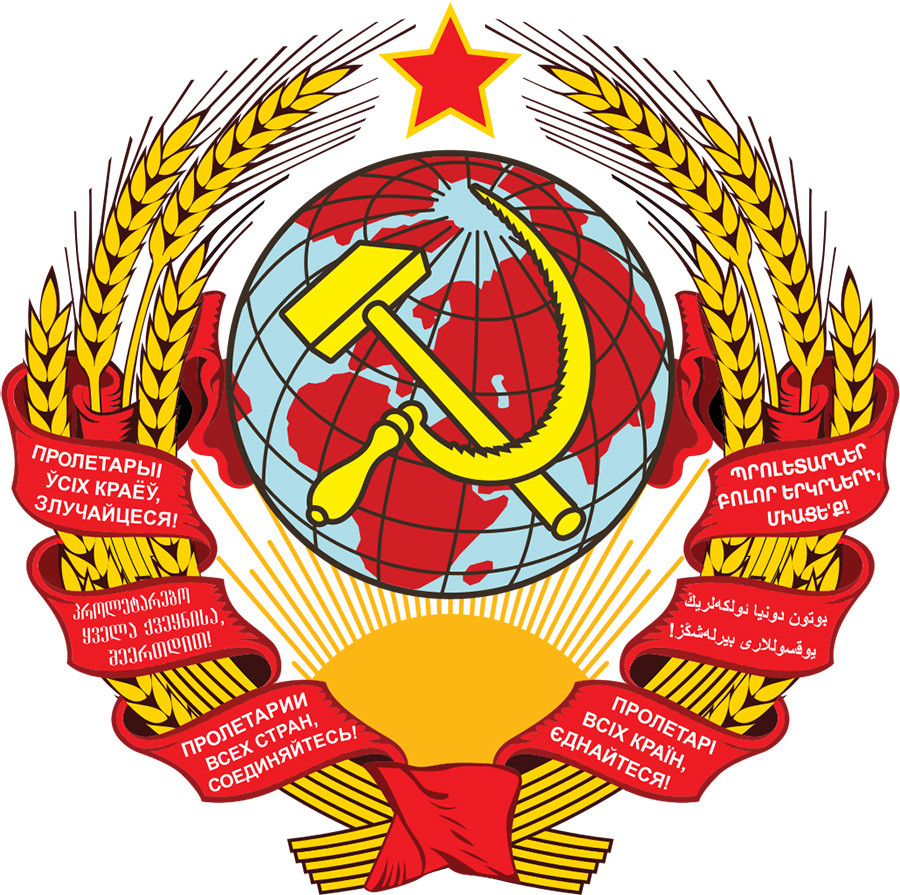
The USSR emblem, 1923 draft
TheSign 1998 (CC BY-SA 3.0)The emblem was changed slightly in 1920 – a red ribbon was added that carried the Communist motto, and the state’s name was abridged to an abbreviation, using dots (R.S.F.S.R.). This emblem became the emblem of the USSR that was formed in 1922 – but instead of a shield, the Earth’s globe was added – this meant that all countries of the world were welcome to join the Soviet Union.
From 1923, the Communist motto was written on the six ribbons that went around the ears of wheat, in the six languages of the first Socialist Republics: Russian, Ukrainian, Belorussian, Armenian, Georgian, and Turkmen Turkish. As the number of republics in the USSR grew, the ribbons were added, and by 1956, there were 15 of them.
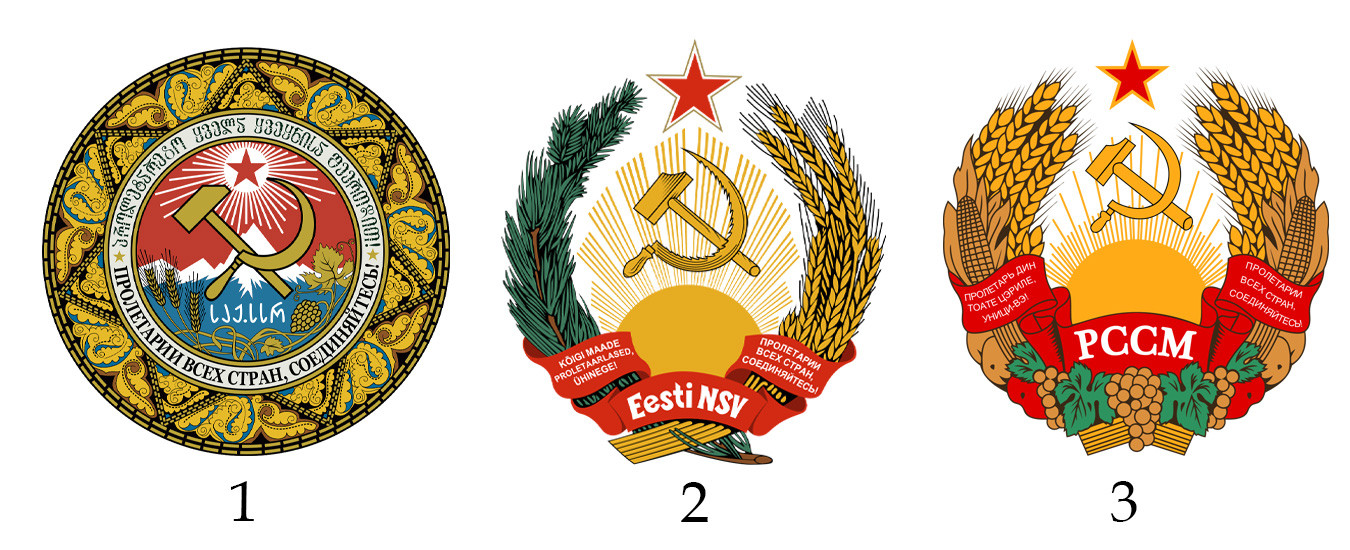
The emblems of the Georgian, Estonian, Moldavian Soviet republics
TheSign 1998, Jam123, (CC BY-SA 3.0)The state emblem of the USSR formed the basis for the projects of the coats of arms of all the union republics, so the main elements of the republican coats of arms were also a hammer and sickle and an inscription “Workers of all lands, unite!” in the language of the respective republic.
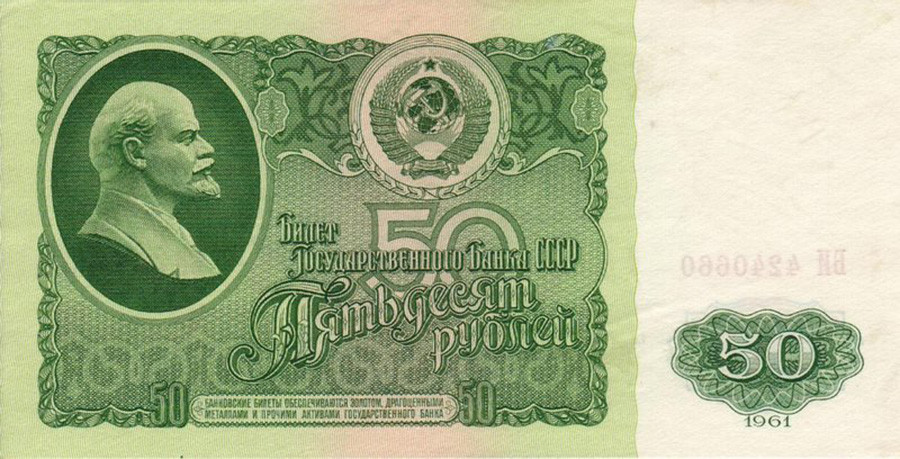
The USSR emblem seen on a 50-ruble banknote from 1961
Ivan DubasovThe USSR’s emblem was replicated innumerable times on banknotes, official documents, in books and on their covers, it was on every schoolboy’s and schoolgirl’s uniform, and even on school exercise book covers.
Why are USSR passports still used?
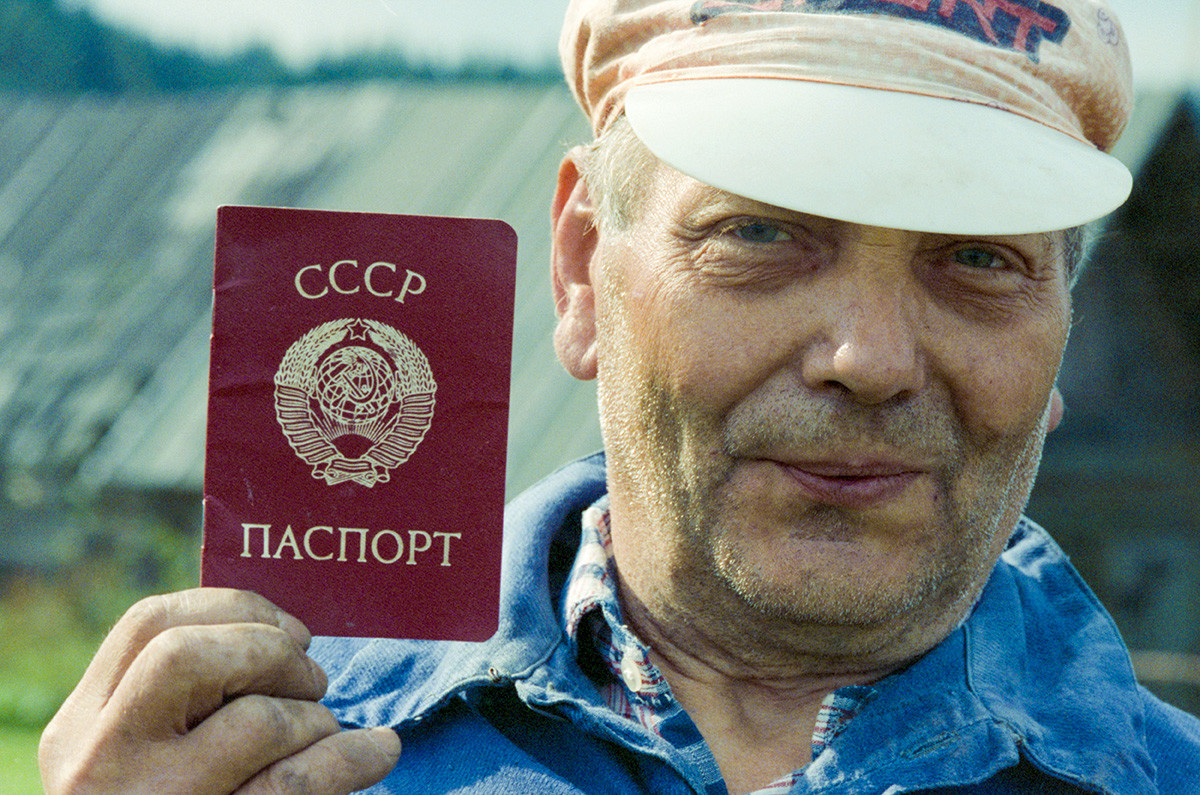
A man with a Soviet passport, 1991
Alexander Ovchinnikov/TASSThe emblem continued to be used after the USSR had fallen in 1991. Until 1995, it was still printed on currency bills, official documents, and passports. As for the bills and documents, the reason is obvious – the state couldn’t immediately replace the Soviet-era cash printing machines that printed money with watermarks and other protective symbols that ensured the money’s authenticity. With passports, the story is a bit more complicated.
As of 2020, there were over 350,000 people in Russia that still had a Soviet passport as their primary ID document. They refused to change their citizenship and formally, are still citizens of the non-existent state.
In 1997, the Russian government issued a decree that stated that USSR passports were to be replaced, but the decree didn’t specify when exactly. In 2002, the issuance of new USSR foreign and internal passports was stopped. However, in 2003 the Supreme Court of the Russian Federation decided that USSR passports don’t have an expiry date, so for everybody who currently owns a USSR passport, it would be valid for the rest of their lives.
The Russian Federation is currently the only state where USSR passports are still valid: all the ex-Soviet republics have made USSR passports obsolete.
If using any of Russia Beyond's content, partly or in full, always provide an active hyperlink to the original material.
Subscribe
to our newsletter!
Get the week's best stories straight to your inbox